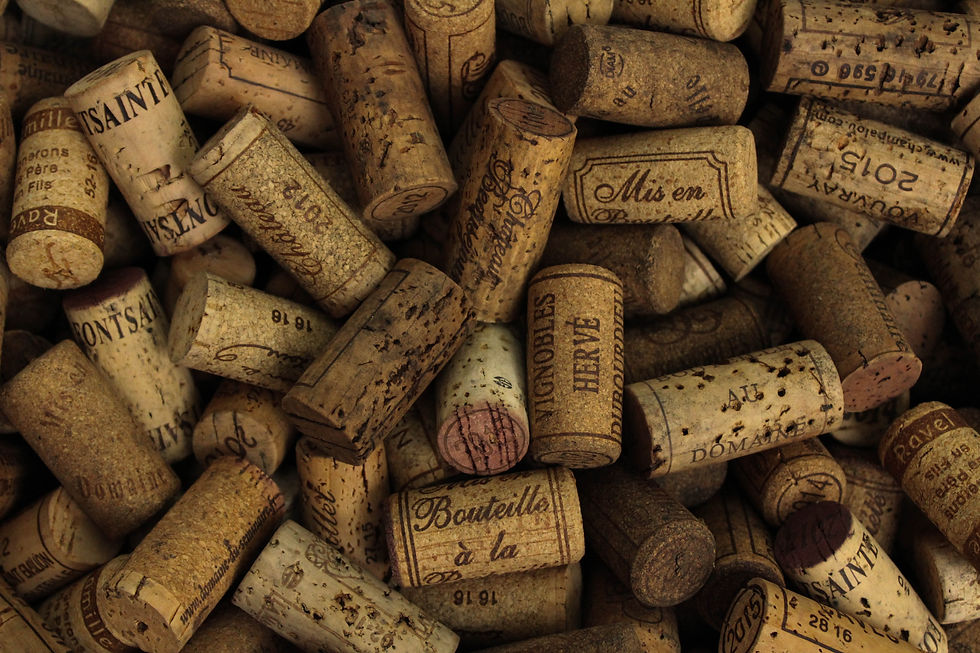Decoding Italian Wine - Understanding The Classification System and Regional Excellence
- P. Austin
- Jun 6, 2023
- 3 min read
VDT, IGT, DOC, DOCG? What does it all mean? Let's break it down:

Italy, renowned for its rich viticultural heritage, boasts a diverse and complex wine classification system that reflects the country's extensive wine production. From the rolling hills of Tuscany, to the sun-drenched, volcanic slopes of Sicily, to the foggy vineyards of Piemonte, Italian wines are celebrated worldwide for their quality, taste, and age. Now lets delve into the Italian wine classification system, exploring the designations of VDT, IGT, DOC, and DOCG, while also highlighting some of the prominent wine regions known for producing exceptional wines of all levels.
VDT (Vino da Tavola): VDT, which stands for Vino da Tavola, represents the simplest and most basic category of Italian wines. These wines are labeled as table wines and often come from non-specific regions. VDT wines do not adhere to any specific regulations regarding grape varieties, winemaking techniques, or aging requirements. While VDT wines may lack the prestige of higher classifications, they can still offer delightful surprises and are often enjoyed as casual everyday wines by Italians all over the country.
IGT (Indicazione Geografica Tipica): IGT represents a step up in the Italian wine classification system. These wines bear an indication of geographical origin, meaning they are associated with a specific region within Italy. IGT wines must follow certain regulations, such as using designated grape varieties and adhering to production standards unique to their respective regions. The IGT classification allows winemakers more freedom in terms of grape selection and winemaking techniques while maintaining a connection to the region's distinct character.

Prominent IGT Regions:
Toscana (Tuscany): Known for producing bold red wines like Brunello di Montalcino and Super Tuscans, Tuscany's IGT wines often combine traditional Italian grape varieties such as Sangiovese with international varieties like Cabernet Sauvignon and Merlot.
Umbria: Renowned for its rich and robust red wines made from Sangiovese and Sagrantino grapes, Umbria's IGT wines exhibit great depth and complexity.
DOC (Denominazione di Origine Controllata): DOC represents a higher quality tier within the Italian wine classification system. Wines with DOC status must meet specific criteria regarding grape varieties, viticultural practices, winemaking techniques, and aging requirements. Each DOC wine is associated with a particular geographic area, reflecting the region's distinctive characteristics.
Prominent DOC Regions:
Chianti (Tuscany): The iconic Chianti region is renowned for its Sangiovese-based red wines. Chianti DOC wines are vibrant, fruity, and well-structured, often displaying notes of cherries, violets, and herbs.
Langhe and Barolo (Piemonte): this prestigious red wine region produces DOC wines known for their power, complexity, and longevity. Wines crafted from the Nebbiolo grape in the Langhe area, for example, offer aromas of roses, tar, and red fruit with an approachable but often complex taste. Barolo wines, made from the same grapes, are often categorized under our final category, DOCG:
DOCG (Denominazione di Origine Controllata e Garantita): The highest classification in the Italian wine hierarchy is DOCG, Denominazione di Origine Controllata e Garantita. DOCG wines undergo even stricter regulations than DOC wines, guaranteeing exceptional quality, adherence to traditional winemaking practices, and specific aging periods. These wines are sealed with a government-issued banderole, ensuring their authenticity and quality.
















































Comments